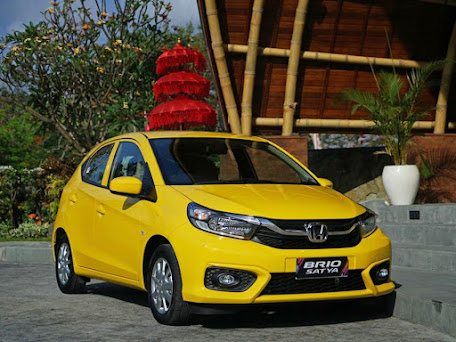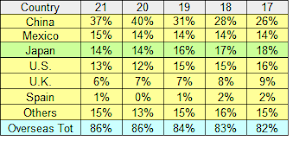 |
| We had one as a family car. It was good |
When I was a lad, our cars were all of UK origin and they served our family well. Gradually things changed and eventually Japanese brands replaced them. The British car industry wasn't the same as it once was and manufacturers from Japan took full advantage of that. The UK car industry has made a comeback but it was never really supported by the UK public.
 |
| We had one of these too, except it was a Leyland model. A good car |
At this time I recall more than once raising online the poor record of support for the UK car industry within the UK. In each case, I was told that it made no difference to the local economy where the car was made. I asked how could design studios and large assembly facilities employing large numbers make no difference? They all pay tax and spend the rest within the country.
As they tried to justify their actions, they would inevitably reply the manufacturers are all foreign owned so it puts nothing into the economy. I replied that buying imported cars offers nothing compared to the benefits of buying locally made. They insisted it made no difference.
The people concerned weren't stupid, they were exhibiting intellectual dishonesty. Their illogical reasoning justified their selfish actions. Of course, people should buy as they feel fit and I'm all for free trade. However, to ignore local workers en masse as now happens in the UK undermines local manufacturing.
 |
| I hired one of these in the UK. Nice car to drive |
To show how the UK public has changed within a generation, the figures below paint a clear and sobering picture. If you are from the UK and don't want to face reality, I suggest you leave at this juncture. If you are prepared to see the facts, read on.
1971: There were not that many manufacturers but they all produced well, supported in the local market and exporting strongly. The country was a net exporter to the tune of 456,000 units or 35.5% over imports.
1981: What a difference a decade makes! Domestic sales were up but BL was in decline, Peugeot had taken over from Chrysler and the transition wasn't pretty, while Ford and GM Vauxhall were importing more rather than they were building more in the UK. Now a net importer by 530,000 (-36%).
1991: BL was now MGR and along with Ford had stabilised. Nissan arrived, Vauxhall had bounced back although Peugeot had slumped in volume. Net importing was down to -355,000 (-22%).
2001: More manufacturers but not a good end result. Nissan, Land Rover and Jaguar were fine and Toyota and Honda were now on board. Even Peugeot had got numbers up. On the flip side, BMW was already messing up MGR, Vauxhall was relying more on imports and Ford was all but gone.
Production was actually up over the decade but sales were booming in the UK and local production hadn't kept up. Net importing was now close to a million (-39%).
2011: Nissan was flying and a settled group of manufacturers had reduced the import deficit. The SMMT was bullish about future prospects too although I couldn't see where growth would come from. An improvement to just 596,000 net imports (-31%). Who could foresee what was about to happen?
2021: MINI was a rock surrounded by quicksand. JLR had moved production of new models offshore and suddenly local manufacturing of aging models went from full capacity to surplus. Nissan decided against maintaining volume and slashed production. Toyota kept up the production numbers but was now importing more. Honda closed its plant during the year and Vauxhall was down to a trickle with the unloved Astra its only model made in the UK. Smaller manufacturers were doing well though.
Summary: It's hard not to wince while reading the above. The decline of the 1970s was based on underinvestment and militant unions undermining an industry that flourished in the 1950s and 60s. The public turned off and hasn't returned even when things were on the up from the late 1980s.
It's now on a decline again and one has to wonder can it reinvent itself? It's not too late but the outcome is by no means certain. As the industry rapidly changes, will the investment required be forthcoming and public support for local manufacturing return? It's not something I need to concern myself with as it's up to others to make things work, but I will watch with interest.

















































